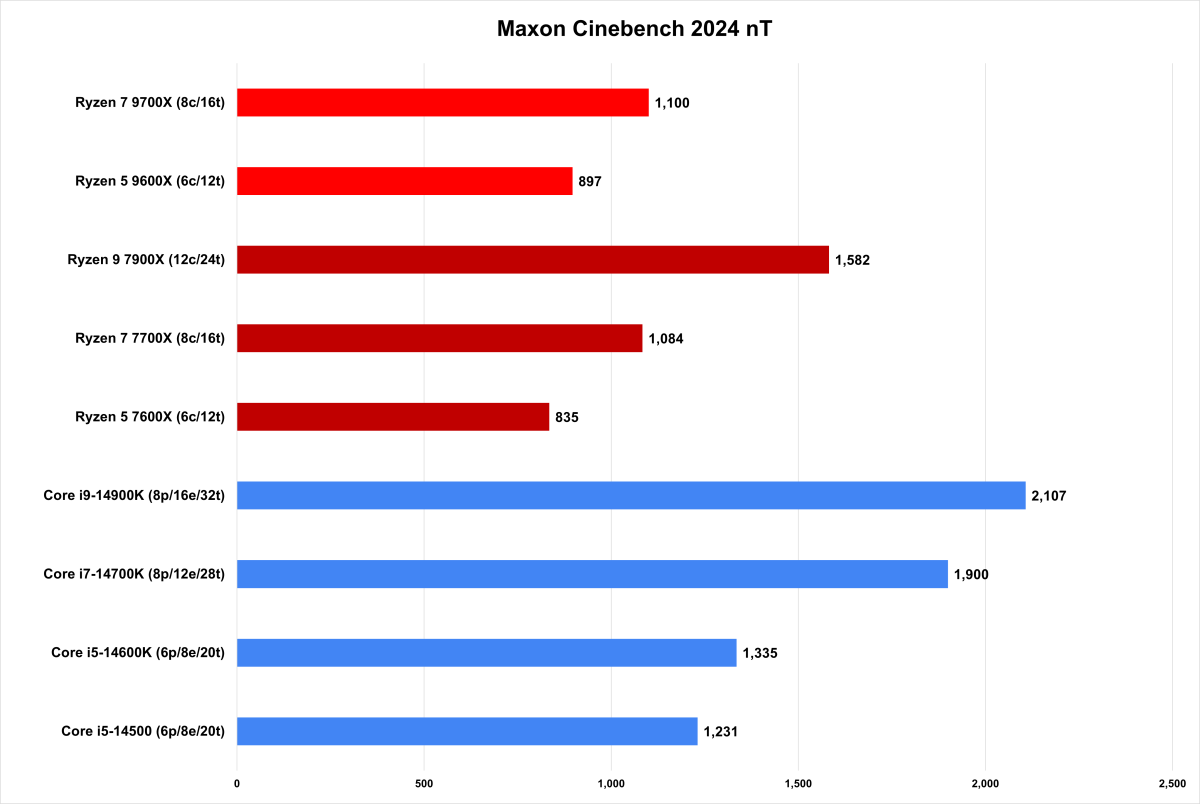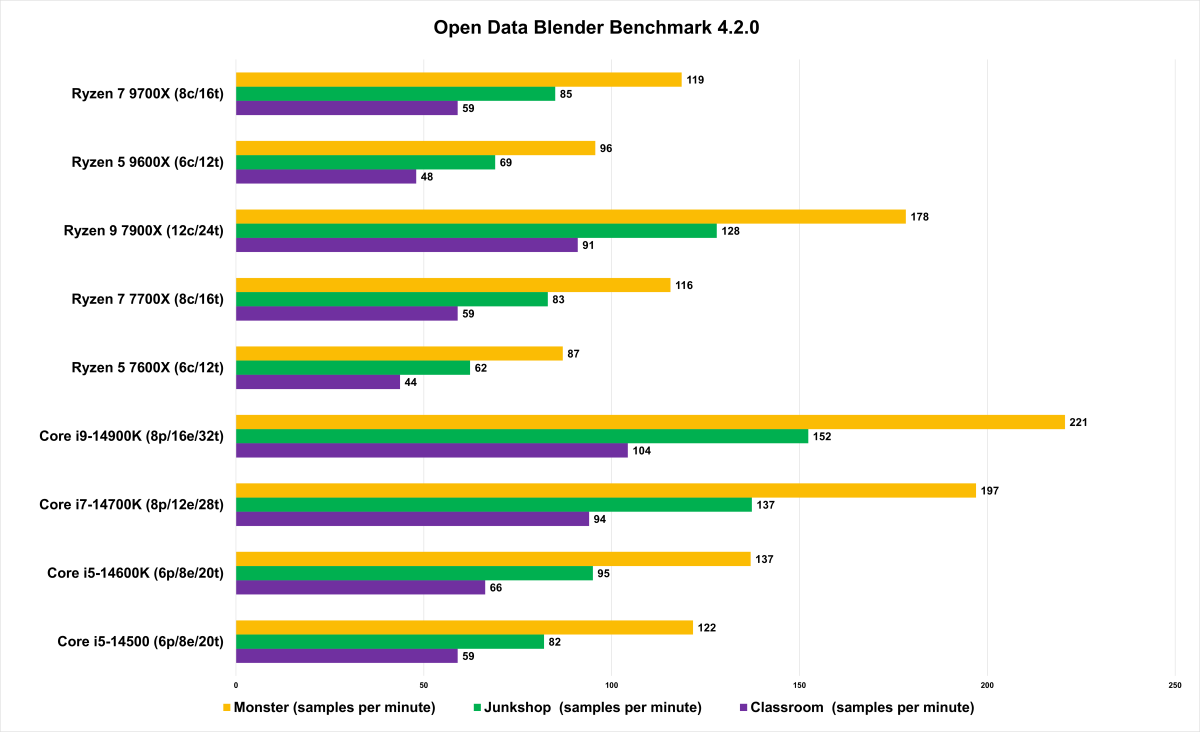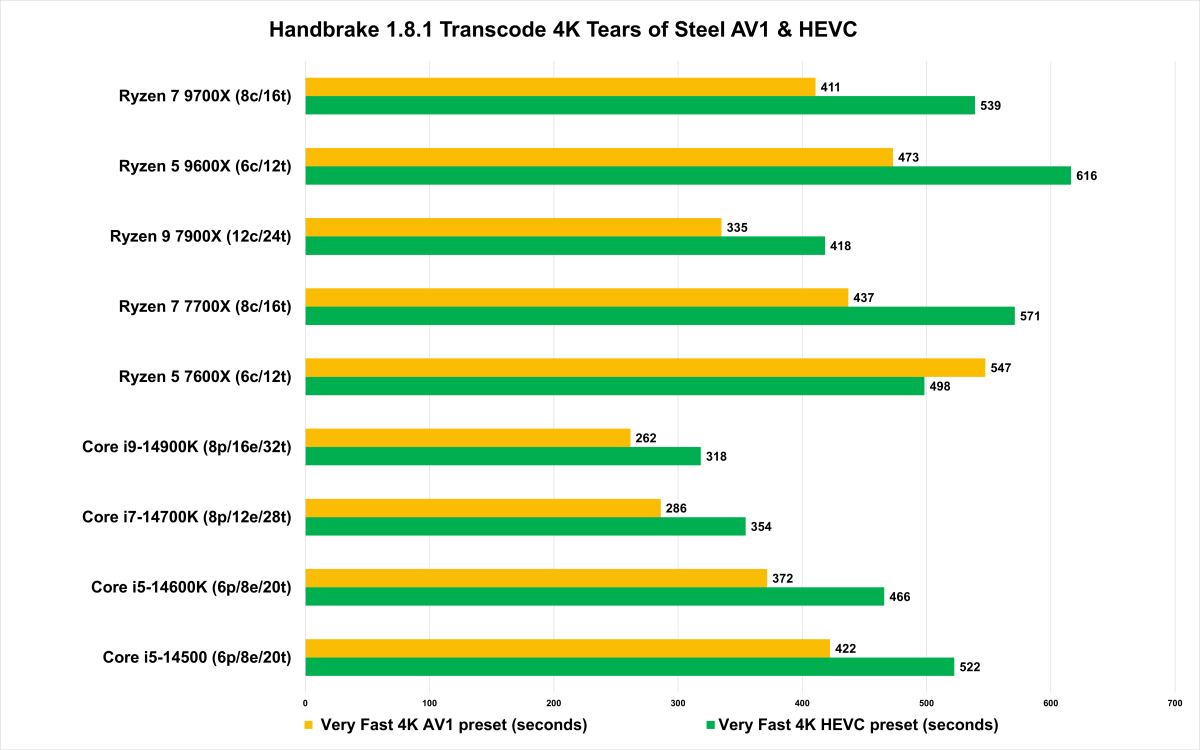After a brief delay, AMD’s Ryzen 9000 finally has hit shelves—but to everyone’s surprise, the first processors come with surprising caveats. Despite offering plenty to like, the $279 Ryzen 5 9600X and $359 Ryzen 7 9700X also sport uneven performance improvements.
The reasons for those benchmark results are nuanced, however. We at PCWorld have even delayed the release of our review to better tease out those fine-grain details. (You can watch us
Big improvements in single-core performance
The 6-core, 12-thread Ryzen 5 9600X and 8-core, 16-thread Ryzen 7 9700X may post similar numbers in single-core performance, but those results put them at the top. In Cinebench R23, one of the rendering benchmarks we use to put CPUs through their paces, the 9700X posted an almost 15 percent increase over the 7700X. Similarly, the 9600X outdid the 7600X by 13 percent. Both gains are solid upticks.
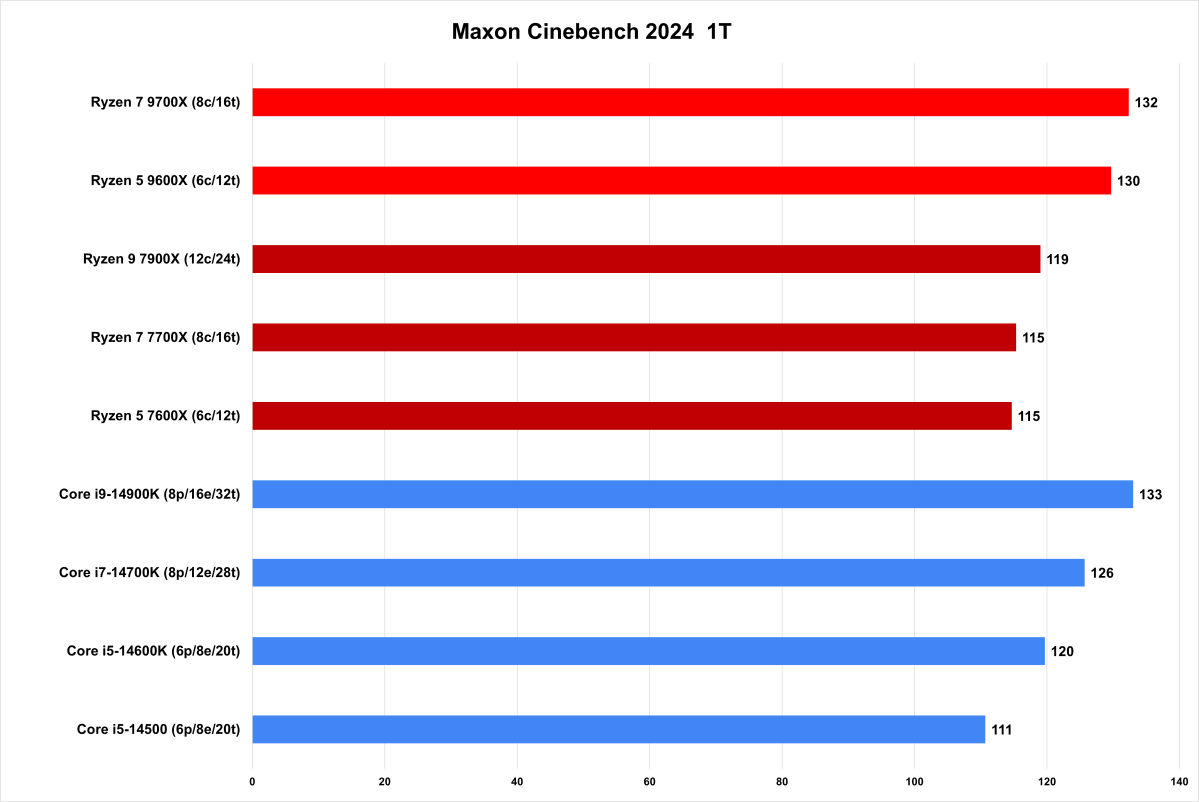
Adam Patrick Murray / PCWorld
Adam Patrick Murray / PCWorld
<div class="scrim" style="background-color: #fff" aria-hidden="true"></div>
</div></figure><p class="imageCredit">Adam Patrick Murray / PCWorld</p></div>Meanwhile, when pitted against Intel and its current 14th-generation chips, AMD has the edge. Against the Core 7 14700K, the 9700X offers a 4.7 percent boost in performance, and is neck-and-neck with the more powerful Core 9 14900K. For its part, the 9600X pulls ahead of the Core 5 14600K by a little over 8 percent, which is a nice win for users mindful of their budgets.
But lackluster gains in multi-core performance
However, Ryzen 9000 loses some shine when you look at its multicore performance. In Cinebench R23’s multithreaded test, the 9700X shows essentially the same performance as the 7700X—the thin 1.48 percent doesn’t exceed a normal testing margin of error (usually between 2 to 3 percent).
The outcome is better for the 9600X, with a roughly 7 percent increase in Cinebench compared to the 7600X, but that kind of uplift is modest compared to previous generational jumps. Typically, 15 to 20 percent begins to push the envelope (as seen in single-core performance).
For Cinebench and Blender, longer bars indicate better performance. For Handbrake (which evaluates speed of test completion), shorter bars are better.
This story repeats with similar effect in our other rendering and encoding benchmarks used to evaluate multicore performance. And unfortunately, with such minimal gains, Ryzen 9000 lags behind Intel’s 14th-gen processors. Opting for a 14700K is a whopping 72 percent performance increase in Cinebench over the 9700X, while a 14600K is an almost 60 percent boost compared to the 9600X. For anyone who needs strong multicore performance (whether for intensive work like rendering or just heavily threaded games), Intel will be your better bet—provided you’re comfortable with the recent concerns around 14th-gen chip performance and longevity.
However, there’s a twist: Ryzen 9000 multicore benchmark results can be notably affected by motherboard settings—and the way many reviewers test (including PCWorld) doesn’t show the silicon’s full range.
Motherboard settings matter
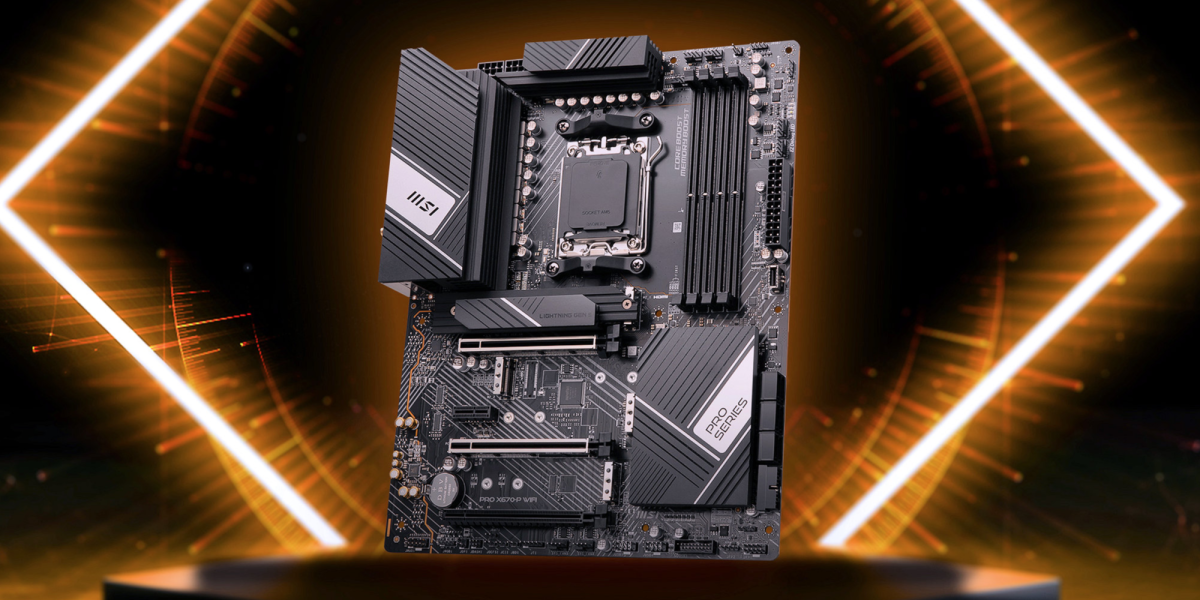
MSI
<div class="lightbox-image-container foundry-lightbox"><div class="extendedBlock-wrapper block-coreImage undefined"><figure class="wp-block-image size-large enlarged-image"><img decoding="async" data-wp-bind--src="selectors.core.image.enlargedImgSrc" data-wp-style--object-fit="selectors.core.image.lightboxObjectFit" src="" alt="MSI X670E" class="wp-image-2237157" width="1200" height="600" loading="lazy" /></figure><p class="imageCredit">MSI</p></div> </div></figure><p class="imageCredit">MSI</p></div>Two settings in your motherboard UEFI (sometimes still colloquially referred to as the BIOS) can greatly influence how well Ryzen 9000 performs: Precision Boost Overdrive (PBO) and RAM voltage.
Of the two, PBO plays a greater role in whether you’ll see merely meh gains, or if you’ll get closer to what AMD promises. When enabled, it dynamically feeds more voltage to the processor for clock speed increases—which provide better performance.
Not all motherboards enable PBO by default, so if you buy a Ryzen 9000 processor and want the most out of it, you’ll need to go into UEFI and ensure it’s on.
Additionally, AMD recommends running RAM at a voltage of 1.2V, rather than 1.25V (a common setting). Similar to PBO, the latter voltage can be a default on some mobos—like on PCWorld’s own test hardware, a ASRock X670E Taichi.
Changing these settings isn’t difficult, but most users are accustomed to dropping in a chip and moving on. These necessary tweaks make Ryzen 9000 feel finickier than previous generations, which didn’t need such precise handling. However, according to AMD, part of the reason for this outcome is due to the lower TDP of the Ryzen 5 and Ryzen 7 processors. With a tighter ceiling on power efficiency, the balance between performance and acceptable operating temperature is a finer line to walk.
Spectacular power efficiency
From a chip nerd’s perspective, AMD’s ability to coax high-end performance out of lower-wattage CPUs is incredible. The power efficiency speaks well of the engineering—Team Red’s first two Ryzen 9000 CPUs have a default TDP of 65W, or nearly half of Intel’s base TDP of 125W for the 14700K and 14600K.
In other words, AMD’s processors are posting single-core performance as good as Intel’s using far less juice. The weaker multicore performance is less to do with an inherent weakness with the silicon design, and more to do with how hard AMD’s willing to gun the engine for the 9700X and 9600X. We’ve already seen in recent CPU generations that much of their gigantic performance leaps have to do with amount of electricity run through the chips. So as hinted by the situation with motherboard PBO settings, that’s the contrast we’re seeing here.
Stagnant gaming performance gen-on-gen

Autentifică-te pentru a adăuga comentarii
Alte posturi din acest grup

A lot of gamers go to great lengths to find a portable retro gaming d

There’s a common misconception about PCIe 5.0 SSDs that since they’re

Microsoft’s controversial Windows Recall has now been generally relea



Microsoft is sending the next annual feature update for Windows 11, v

Smart appliances are great since you can control them from your phone
